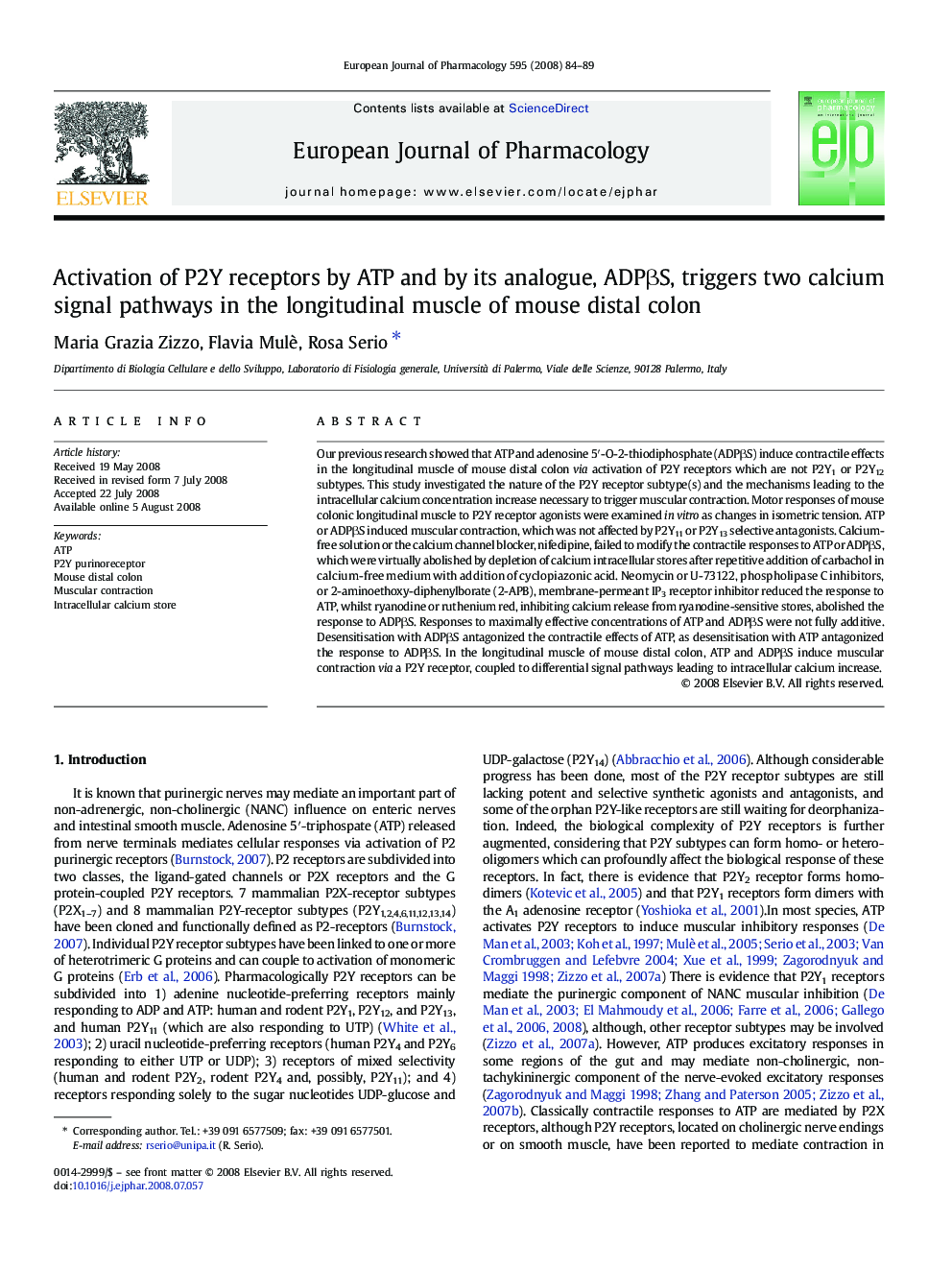| Article ID | Journal | Published Year | Pages | File Type |
|---|---|---|---|---|
| 2534840 | European Journal of Pharmacology | 2008 | 6 Pages |
Our previous research showed that ATP and adenosine 5′-O-2-thiodiphosphate (ADPβS) induce contractile effects in the longitudinal muscle of mouse distal colon via activation of P2Y receptors which are not P2Y1 or P2Y12 subtypes. This study investigated the nature of the P2Y receptor subtype(s) and the mechanisms leading to the intracellular calcium concentration increase necessary to trigger muscular contraction. Motor responses of mouse colonic longitudinal muscle to P2Y receptor agonists were examined in vitro as changes in isometric tension. ATP or ADPβS induced muscular contraction, which was not affected by P2Y11 or P2Y13 selective antagonists. Calcium-free solution or the calcium channel blocker, nifedipine, failed to modify the contractile responses to ATP or ADPβS, which were virtually abolished by depletion of calcium intracellular stores after repetitive addition of carbachol in calcium-free medium with addition of cyclopiazonic acid. Neomycin or U-73122, phospholipase C inhibitors, or 2-aminoethoxy-diphenylborate (2-APB), membrane-permeant IP3 receptor inhibitor reduced the response to ATP, whilst ryanodine or ruthenium red, inhibiting calcium release from ryanodine-sensitive stores, abolished the response to ADPβS. Responses to maximally effective concentrations of ATP and ADPβS were not fully additive. Desensitisation with ADPβS antagonized the contractile effects of ATP, as desensitisation with ATP antagonized the response to ADPβS. In the longitudinal muscle of mouse distal colon, ATP and ADPβS induce muscular contraction via a P2Y receptor, coupled to differential signal pathways leading to intracellular calcium increase.
